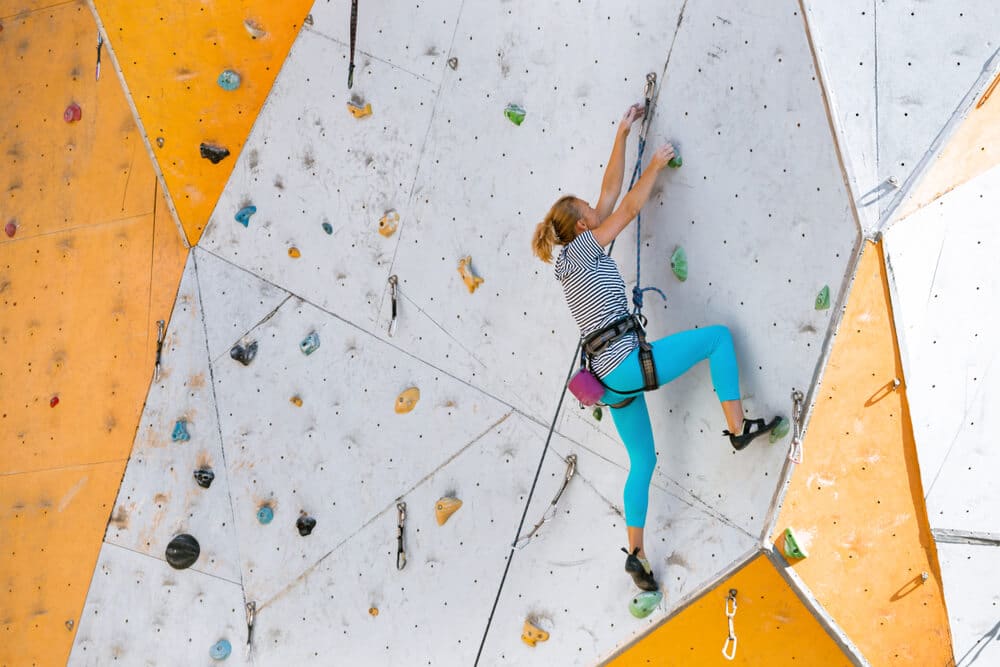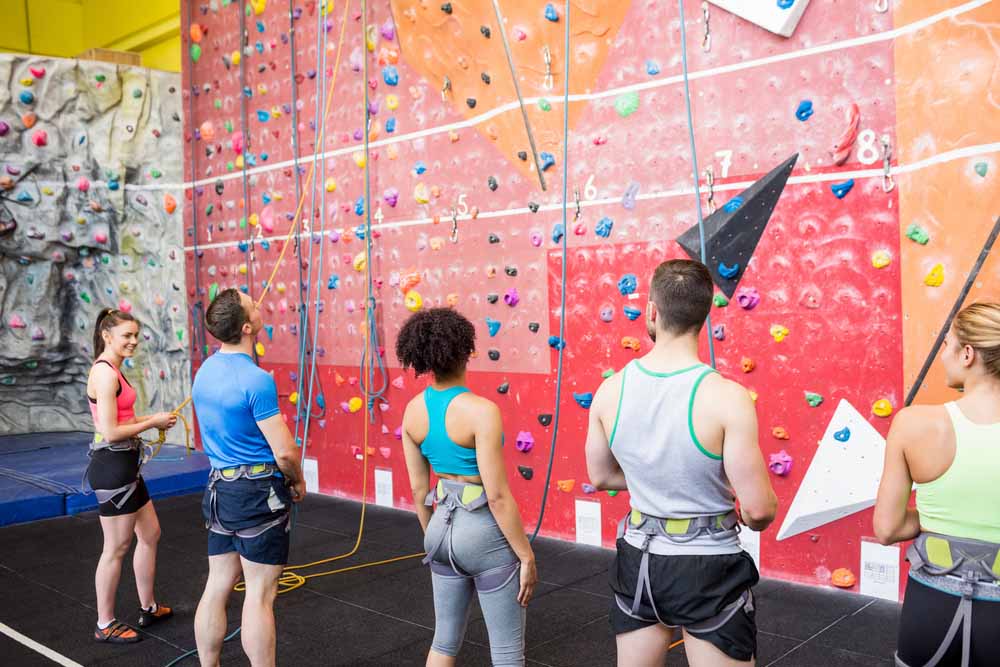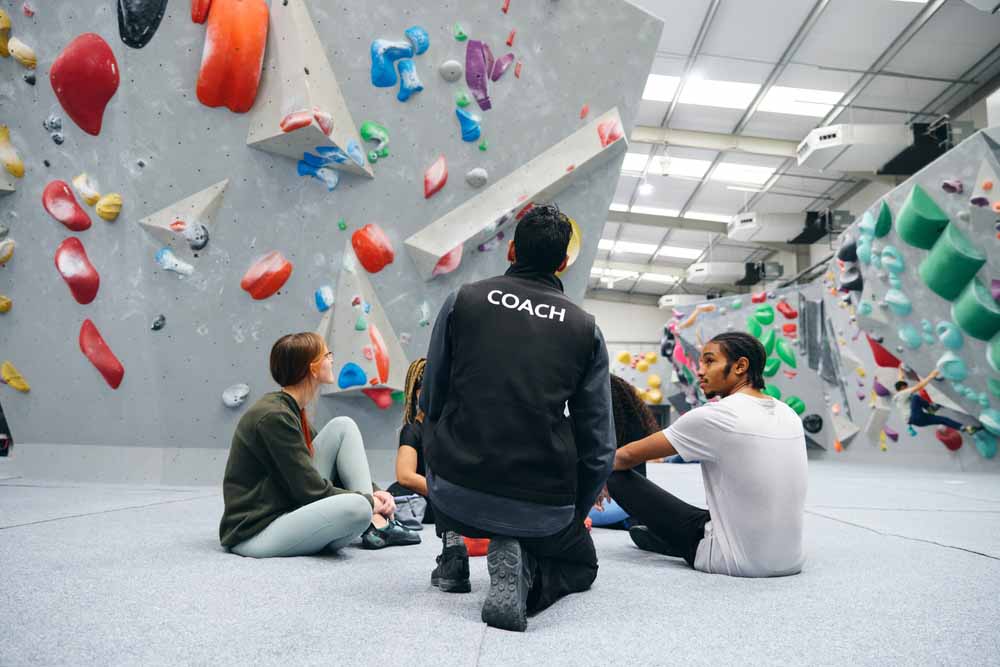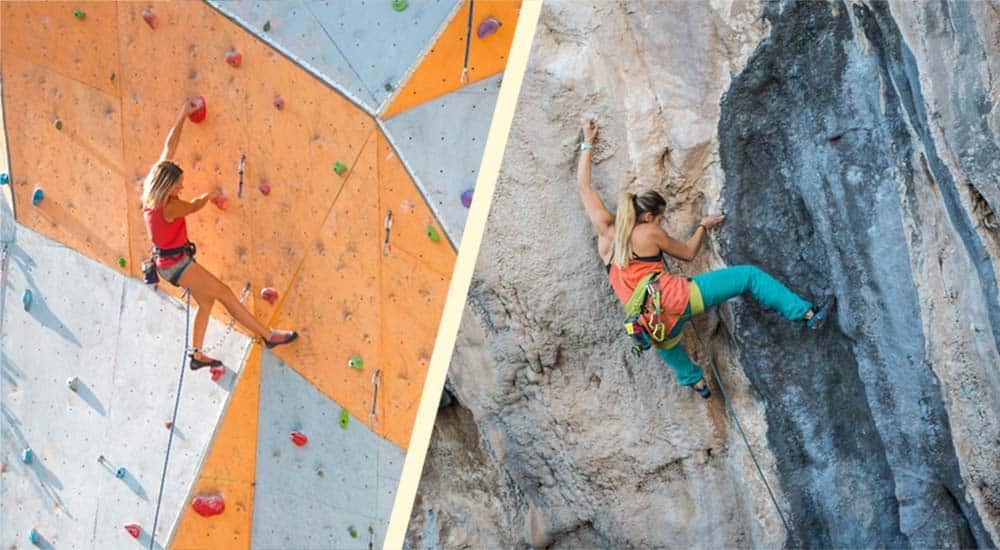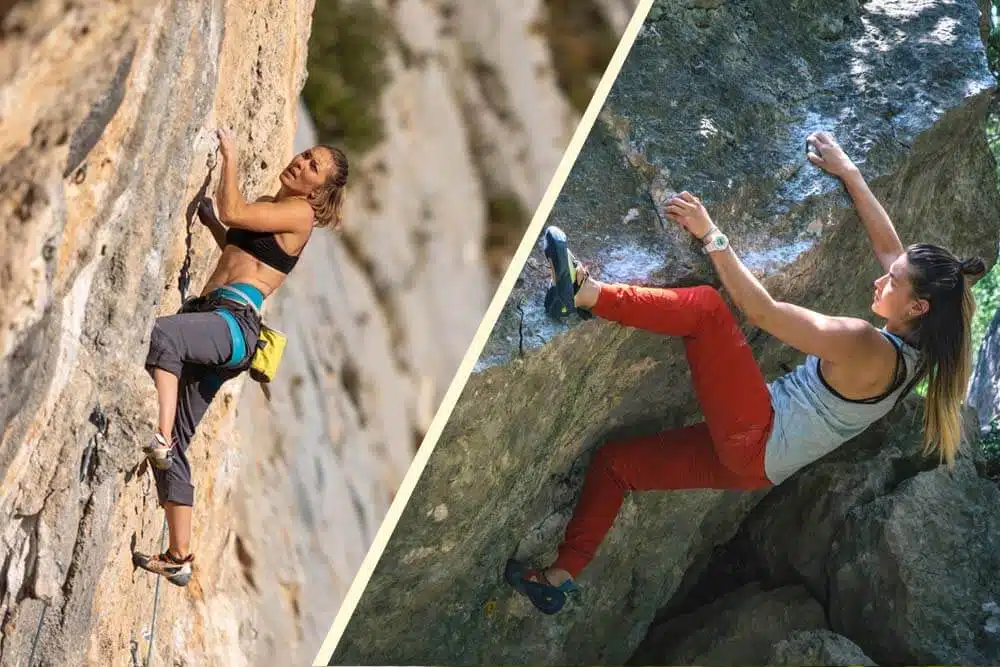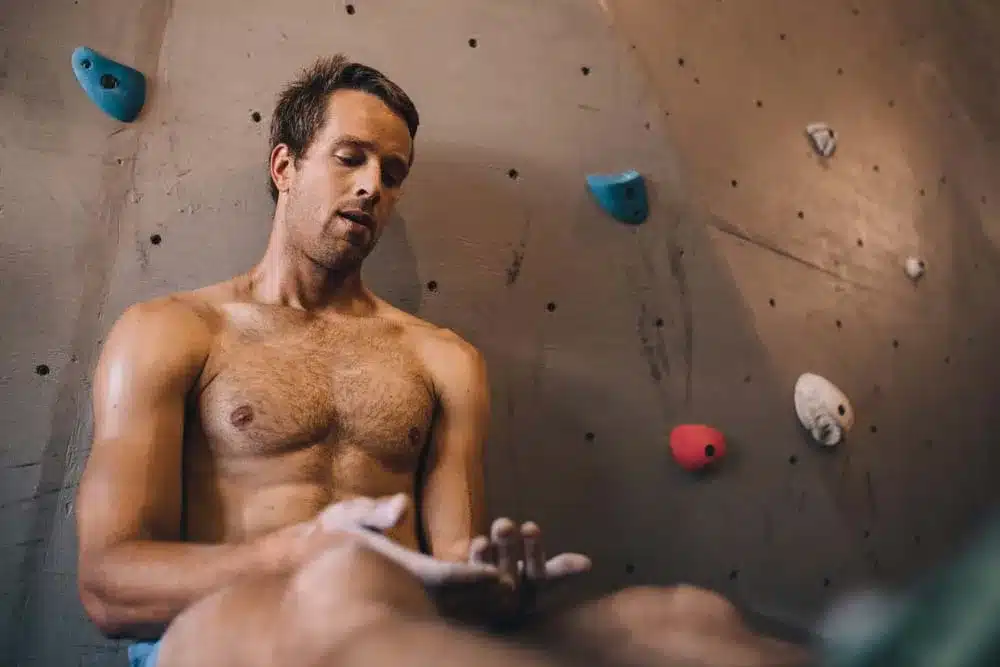One of the most attractive things about the sport of rock climbing is how quickly you can advance. Climbing is a sport that comes naturally to many, and new climbers usually experience rapid progression. Beginners often race through easy to moderate grades, snagging their first 5.7, 5.8, 5.9, and 5.10 in the first few months of their climbing careers, and then grow frustrated when they hit the common plateau around 5.11.
There are a variety of reasons why this occurs, but if improving just doesn’t feel as easy as it did when you were a beginner, you aren’t alone. It happens to the best of us. Beginner climbers turn to a variety of solutions. Some think the answer lies in diet, some technique, some mentality. Others focus on the duration, difficulty, regularity, or style their training sessions. In truth, the answer is a bit of everything. It’s complicated.
No need to string you along here, so we’ll start by answering the big questions, such as how long a climbing session should last and how often you should climb per week. Then we’ll offer a few tips for effective training sessions and finish with a brief Q&A. Let’s tie in!
How many climbing sessions should you do per week?
If you’re looking to advance as a climber, three to four climbing sessions per week is ideal. This is the benchmark number to improve upon your current level of strength without injury.
If your schedule doesn’t allow for three or four sessions, then two climbing sessions per week is a good minimum requirement. If you aren’t hitting the rock at least twice per week, you certainly won’t have enough training time to progress, and it may even be hard to maintain your current level of strength.
Ensure you keep a consistent schedule to avoid slacking off in your training, but don’t be afraid to add variety into your routines. In fact, variety is a great way to up your time on the wall without running into injury. We’ll cover this more below.
Remember, any time you’re climbing, that counts as a climbing session. It could be at the climbing gym or at an outdoor crag. It could be sport, trad, bouldering, or top roping. Change it up!
How long should a climbing session last for beginner climbers?
This question is a tricky one, because it depends on the style and intensity of climbing you’re performing. An eight-hour day at the crag, hitting one route an hour while belaying and chilling in the interim, is a lot different than spending one hour going pedal to the metal at the rock gym and hitting the spray wall nonstop.
That said, two hours is a good session benchmark for a beginner rock climber. This should give you enough time to warm up and challenge yourself on the wall. Remember, this two hour window means you’re actively training and climbing, not taking bathroom breaks, munching on snacks, scouring the gear shop, and chatting to your buddies. If you’re mucking around like that, then add some extra time in there!
Above all else, listen to your body. If you’re coming back from your sessions burnt out and in pain, then you may be climbing for too long.
How do you maximize a training session in climbing?
How to maximize your training and improve your climbing ability is a big, big question, and it’s one that could have a whole series of articles written on it. The key points include warming up and down, targeting your climbing, and adding antagonist muscle workouts.
Warm Up
Warmups are mega-important, but many new climbers seem to disdain them. Get that blood pumping. A short jog on the treadmill, or even just some jumping jacks, can work wonders. Add in some dynamic stretching to get your muscles and tendons loose before hopping on the wall.
Climbing
Once you’re warmed up, it’s time to get on the wall! Ease yourself into a climbing session by hitting some easy routes before diving into your hard project. The key thing is to avoid going too easy for too long. Some folks spend so much time lapping easy routes as warmups that they start to eat into their session’s potential. 10 to 15 minutes is enough for those easy routes. Then focus on your project.
Warm Down
Warm downs are a key step in the process, but like warmups, they’re often forgotten! Warming down will help prevent post-climbing soreness and fast recovery so you can sesh hard again as soon as possible.
A good warm down is simple, just 10 to 15 minutes of easy aerobic exercise. This could be climbing slowly long easy routes, hitting the treadmill or stationary bike, or doing jumping jacks, high knees, or another basic body aerobic exercise.
Antagonist Workouts
Climbing is a great full-body workout, but it doesn’t hit every muscle group easily. It’s important to add some additional workouts to hit underworked muscle groups. This will prevent injuries, and avoid muscle imbalance.
Since climbing is primarily a pulling exercises, pushing exercises are good antagonist workouts. Pushups, dips, pectoral fly, bench presses, shoulder presses, and tricep pushdowns are all examples. Don’t overdo these exercises, though. Two or three sets of 10 reps will make a big difference.
Tips for an Effective Climbing Routine
Variety is the Key
Overuse injuries are the bane of the developing climber. One of the ways to prevent them while climbing often is to add diversity to your workouts.
Don’t just work slab boulder problems every session. Don’t just focus on crimpy sport routes.
As a new climber, you should be improving your skill and technique by climbing as many different styles and disciplines as possible. Work slab, cave, and vert. Try dynamic sequences and static ones. During a session, climb on pinches, sidepulls, underclings, and crimps, instead of focusing on a single style of route or hold type.
Indoor Climbing vs Outdoor Climbing Sessions
Today, most climbers begin their career at indoor climbing gyms. Even if you develop a passion for climbing on real rock, unless you live right next to a crag, it’s likely that two-thirds or more of your climbing will be on plastic, particularly when it comes to training sessions.
Indoor and outdoor climbing are similar, but offer different benefits. Indoor climbing lets climbers target specific muscle groups and train precise sequences, while outdoor climbing adds elements such as routefinding, gear, and variable conditions. So try to blend some indoor with outdoor. Climb once or twice indoors during the week, and go outdoors on the weekends, for example.
Bouldering vs. Sport Climbing
Bouldering and sport climbing are both disciplines of rock climbing, but their nature and effects on the body are quite different. Bouldering is high intensity, short duration activity. Sport climbing entails a lower intensity for a longer duration. Bouldering focuses more on power and strength, while sport climbing focuses more on stamina and endurance. Both are excellent disciplines with a ton of variety, that will work different aspects of your climbing fitness.
Many new climbers focus only on bouldering, because they haven’t learned the basics of roped climbing, such as how to tie in, how to build anchors, how to belay, or how to lead climb. Because it requires no gear or technical knowledge, bouldering is the most accessible discipline for beginners. But due to its heavier focus on stamina and endurance, roped climbing is much more forgiving than bouldering when it comes to overtraining.
You’re less likely to develop overuse injuries while climbing on a rope. (It’s also easier to injure yourself in general when bouldering, which is why learning how to fall is so important). If you’re only bouldering, try to throw in a bit of top rope or lead climbing into your routine, and vice versa.
Listen to Your Body
A key part of being a high performing climber is learning to listen to your body. Climbing puts significant stress on muscles, tendons, and ligaments. Despite what you might think, more climbers are injured from overuse than falls. (I’ve been climbing for sixteen years, and the worst injuries of my career have all been invisible ligament and tendon injuries, not the dramatic snapped ankles or broken arms you might expect.)
Soreness is okay. Pain isn’t. Learn how to tell difference, and know when to take time off. An few extra days of rest after a hard session is worth it to avoid months of recovery and rehab if you don’t rest and go injure yourself. If you’re forced to take a few extra days off the wall, take it as a chance to improve technique and learn about new climbing skills, such as knot tying and anchor building.
Good Diet and Mentality
Without adequate rest, the risk of strains, sprains, and more serious injuries increases. But rest and recovery isn’t just about taking time off. A proper diet, cross training (below), and keeping a positive, motivated headspace is just as important as a rest day. Ensure that you’re getting enough calories in your body and eating three meals per day, particularly before and after you climb. Don’t just chug a Red Bull and hit the gym.
Likewise, stay positive even if your progress feels stagnant. Climbing gets progressively harder. Sending 5.12 will be harder than sending 5.11, and sending 5.11 will be harder than sending 5.10. Each grade requires exponentially more work, time, effort, and skill. Don’t get down on yourself!
Don’t Just Climb!
One of the biggest mistakes new climbers make is thinking that climbing is the only answer to progress. Cross training works wonders if your climbing is showing diminishing returns.
Instead of simply hitting the rock gym longer and harder, supplement your climbing training with cardio workouts like trail running, swimming, long-distance hiking, or cycling.
Add in traditional gym routines focusing on pushing (bench press, tricep pushdown), pulling (bicep curl, lat pulldown), and leg (squats, lunges) exercises to maintain muscle balance and prevent injury. Climbing workouts are an important part of developing climbing strength, but they aren’t the only piece of the puzzle.
Frequently Asked Questions
Should you climb everyday?
While it’s technically possible to safely climb every day, it’s not a good way to progress as a climber. If you’re climbing seven days in a row every week, then you’re either: a) going to injure yourself or b) training at a difficulty and duration that is so low that your climbing will not improve.
How many days a week should you climb?
Try to climb at least two to four days a week. Three or four days is ideal. Two is a good minimum if your schedule is busy or you just started climbing. Many beginner climbers climb twice during the week indoors, then add a third session outside on the weekend when possible.
How many rest days should I take between climbing?
Two rest days between sessions is typically enough time for your muscles to recover, however resting becomes less necessary as you grow in technique and better understand how your body responds to the stresses of climbing. The key is to listen to your body.
Beginner climbers should aim to take two or three days off between sessions, intermediate climbers can take one or two, and advanced climbers can often climb back to back without repercussions, although it’s still recommended to take at least one or two rest days per week.
Can you get fit by just climbing?
Rock climbing is a great way to improve physical fitness and burn calories. It has many health benefits, but it’s not a one-stop answer to physical fitness. It’s benefits are skewed more heavily in some areas than others.
For one, climbing focuses on “pulling” as opposed to “pushing,” which can lead to muscle imbalance in areas such as the biceps (pulling) and triceps (pushing). Climbing is also primarily anaerobic. Adding heavy cardio such as running, cycling, or swimming into your routine along with climbing is the best way to obtain good overall health.


